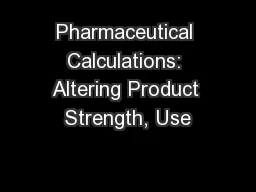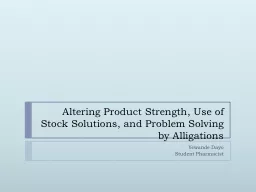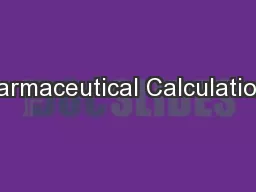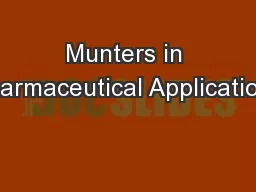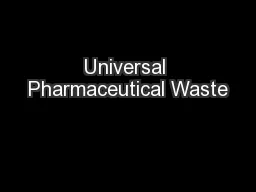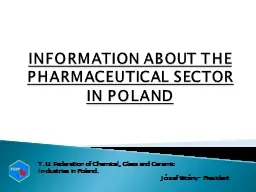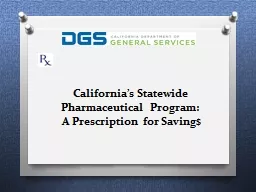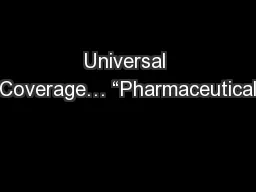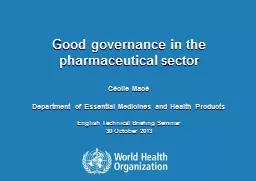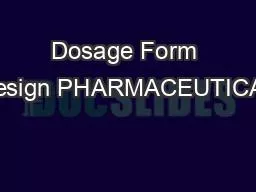PPT-Pharmaceutical Calculations: Altering Product Strength, Use
Author : liane-varnes | Published Date : 2017-12-04
Alligation Danielle DelVillano PharmD Objectives Perform calculations for altering product strength by dilution concentration or fortification Perform calculations
Presentation Embed Code
Download Presentation
Download Presentation The PPT/PDF document "Pharmaceutical Calculations: Altering Pr..." is the property of its rightful owner. Permission is granted to download and print the materials on this website for personal, non-commercial use only, and to display it on your personal computer provided you do not modify the materials and that you retain all copyright notices contained in the materials. By downloading content from our website, you accept the terms of this agreement.
Pharmaceutical Calculations: Altering Product Strength, Use: Transcript
Download Rules Of Document
"Pharmaceutical Calculations: Altering Product Strength, Use"The content belongs to its owner. You may download and print it for personal use, without modification, and keep all copyright notices. By downloading, you agree to these terms.
Related Documents

